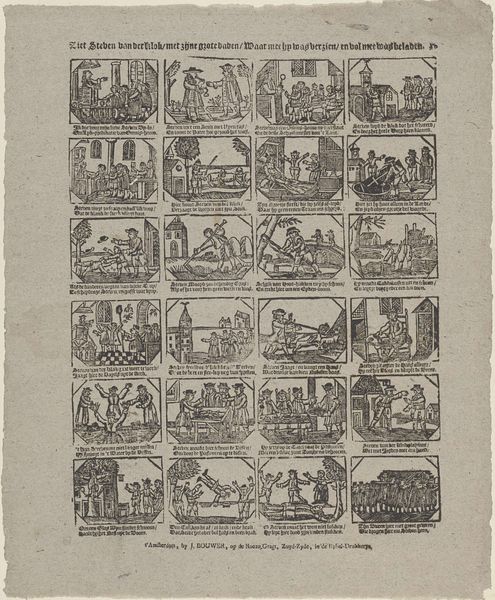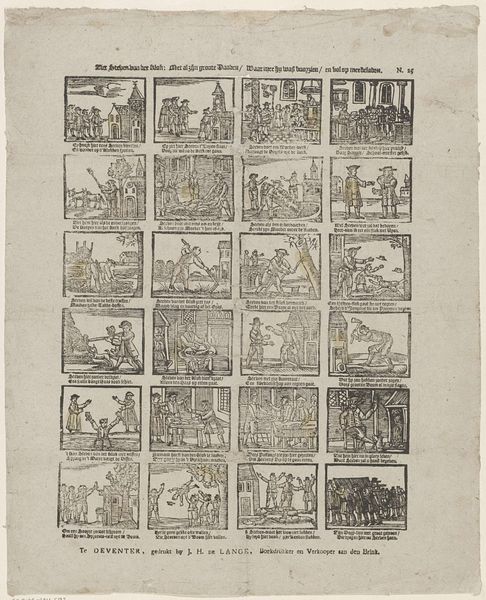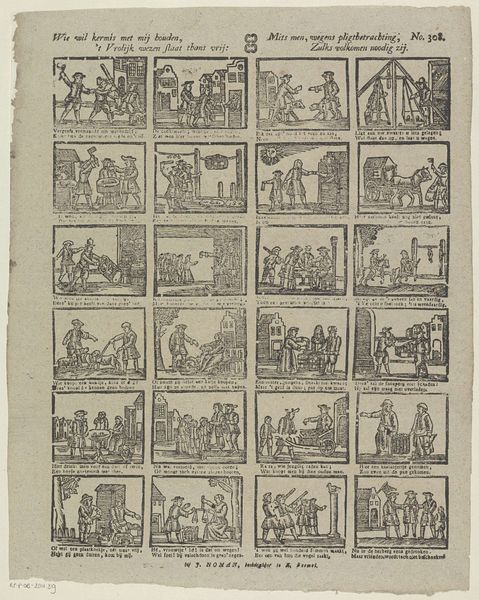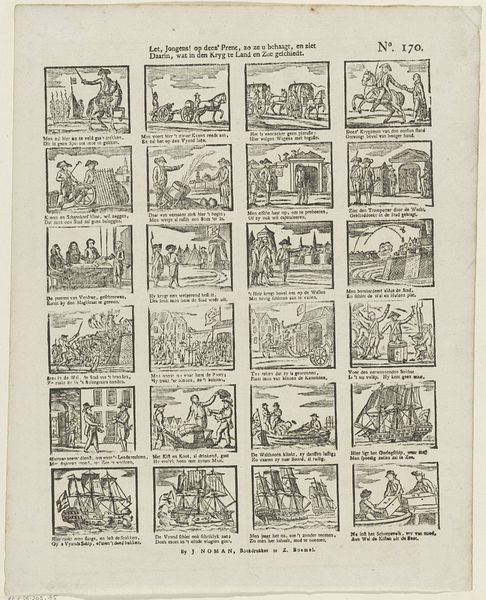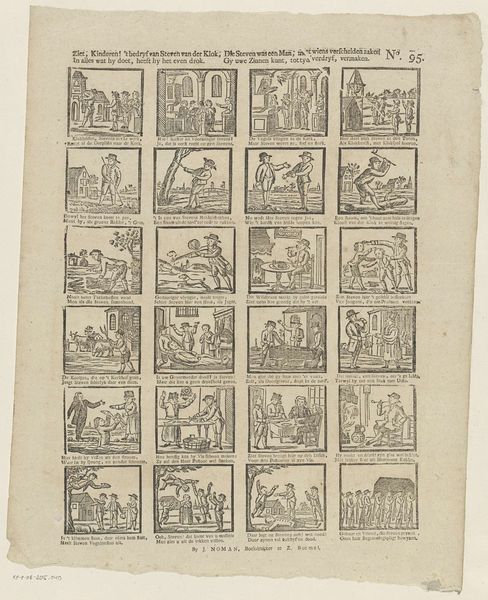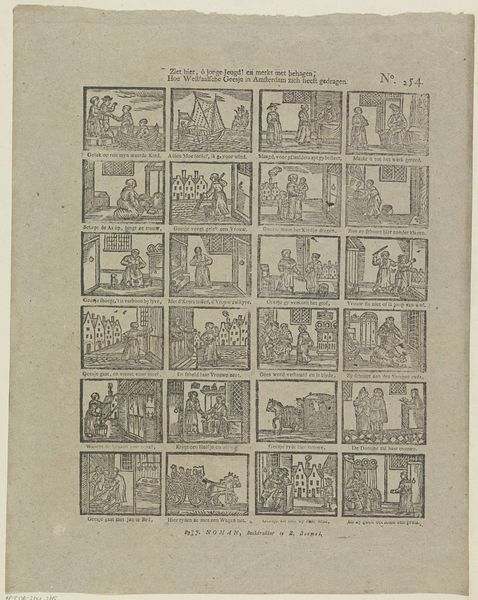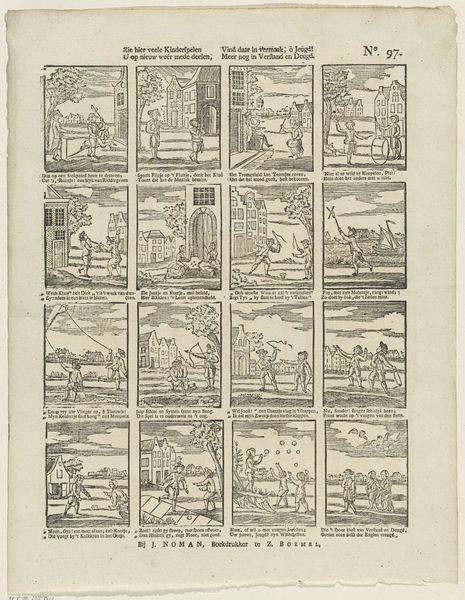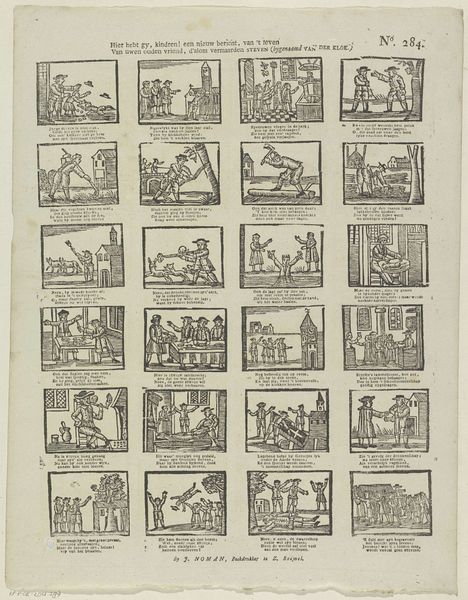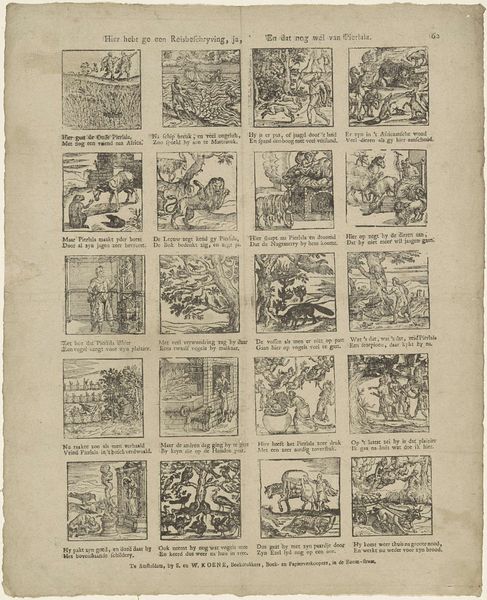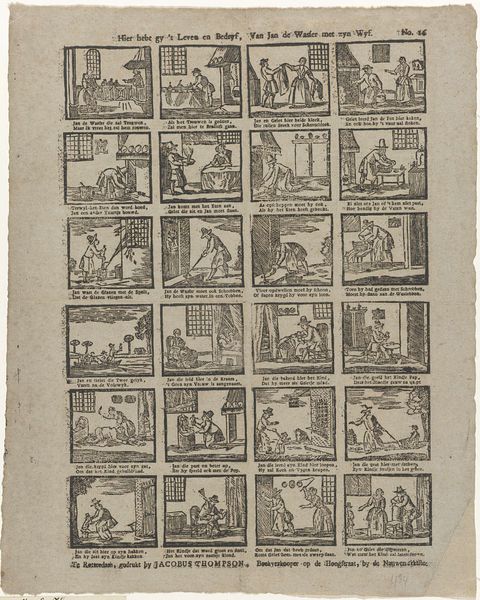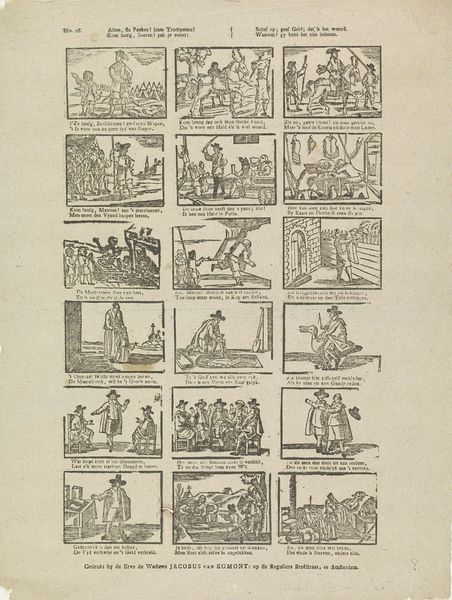
graphic-art, print, engraving
#
graphic-art
#
comic strip sketch
#
aged paper
#
toned paper
#
narrative-art
# print
#
old engraving style
#
sketch book
#
personal sketchbook
#
folk-art
#
pen work
#
sketchbook drawing
#
genre-painting
#
storyboard and sketchbook work
#
sketchbook art
#
engraving
Dimensions: height 399 mm, width 318 mm
Copyright: Rijks Museum: Open Domain
Editor: So, this is “Het leven van Jan van Spanje, en Tryn Salie,” an engraving by Johan Noman, created sometime between 1806 and 1830. It looks like a page from a storybook, or maybe an early comic strip. It feels very…folksy, I guess? What social dynamics are at play here? Curator: It does have that storytelling quality, doesn’t it? But more than just a simple tale, let’s consider it as a window into Dutch folk culture and perhaps even a commentary on societal expectations. Look at the clothing, the settings, the interactions…what narratives about gender or class do you think Johan Noman is trying to present to his audience? Editor: I hadn't considered that it might be trying to say something bigger. Is it typical to see that level of social commentary in folk art from this period? Curator: It’s certainly not unusual. Folk art, like any art form, can reflect and critique the society that produces it. What are the power dynamics illustrated? Is there commentary on domesticity, on the roles of men and women? It’s all open for interpretation and reflection, based on the viewers positionality, isn't it? Editor: That makes me look at it with completely fresh eyes. I was just seeing a charming story, but now I’m wondering what’s underneath the surface. Thanks! Curator: Precisely! Always dig deeper and question the status quo within visual representation, as there are messages everywhere that influence how we relate to one another in today's world. This piece truly emphasizes that seeing art is not passive but active.
Comments
No comments
Be the first to comment and join the conversation on the ultimate creative platform.

